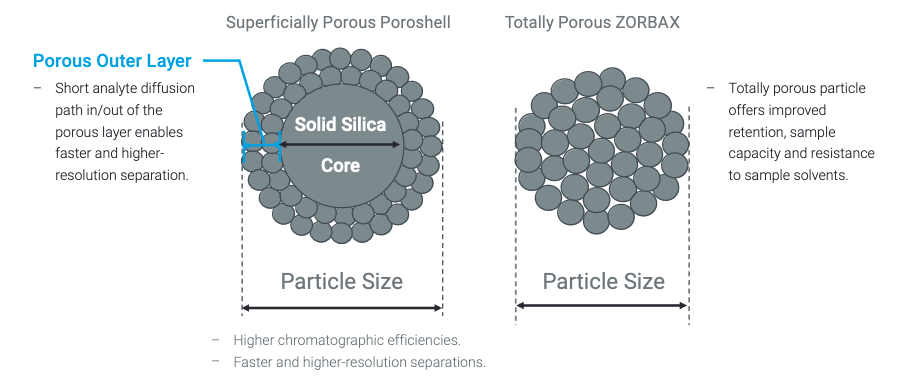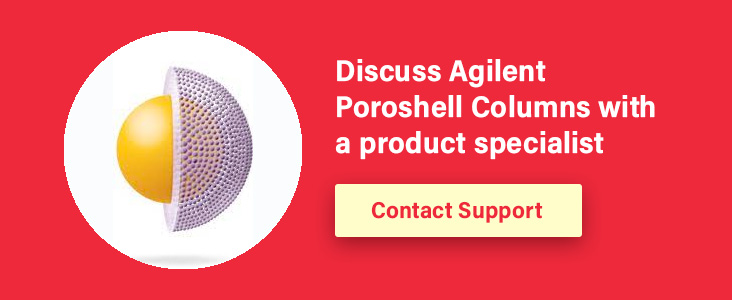4th Jan 2024
Revolutionizing Your Chromatography | The Power of Poroshell and more
Are you frustrated with increasing backpressures from your current HPLC column? Do you wish you could achieve UHPLC results with HPLC instrumentation? Choosing the proper tools for success is important. But understanding the advantages and disadvantages of the many options can be overwhelming. As you dive into this blog, you'll discover some ideas to fine-tune your current methods, improve your chromatography results, and save time and money.
Superficially Porous Particles
A logical place to start in your journey to improve your chromatography is the column. First, we'll discuss our most popular line of HPLC columns. Agilent's Poroshell columns boast superficially porous particles. Superficially porous particles have been around for a while now, but we do still see a fair amount of fully porous particle columns in use. There are a number of benefits of superficially porous particles (SPP) to consider if you’re looking to improve your chromatography. For starters the solid cores of the SPP limit diffusion distance in comparison to a fully porous particle. This improves both efficiency and resolution.

Reduce Backpressure: The Advantages of Agilent Poroshell
Another benefit of a SPP column is the reduced pressure, as the mobile phase does not travel all the way through the particles in the column, which inherently creates less back pressure. One avantage of superficially porous particles is a much more narrow particle size distribution when compares to fully porous particles of similar size. This not only allows a more uniformly packed bed, but also the option of using a 2 µm frit. In comparison, many other sub 2 µm columns with fully or superfically porous particles contain inlet frits between 0.2-0.5 µm. This can lead to column clogging and increased backpressure, reducing your column lifetime. The key takeaway is Agilent Poroshell columns may be worth a try if you're looking for faster and more accurate results.
The Importance of Proper HPLC Connections
Even with the best column possible for your application, your chromatography can still appear to be problematic if there are improper fittings throughout the HPLC system. Leaks and dead volume (leading to peak shape problems) are the most common problems with HPLC fittings. Learning how to make proper connections can take time and experience. But we also offer a number of solutions for easy, leak-free connections for anyone to achieve. You can read more about a popular option amongst Chrom Tech customers here. It’s also important to note that tubing can also affect system pressures, and performance. If you need more information about tubing or connections, be sure to reach out to a product specialist today by filling out the form in the link below:
Often Overlooked: Sample Prep
We have many blogs on various sample preparation options, so we won’t go into much detail here. Different labs have different procedures for sample cleanup. Anything from dilute and shoot, to filtration, to SPE all have their place in the chromatography world. For more information on sample preparation methods, you can talk to a product specialist, or browse our other sample prep resources.
As the field of chromatography continues to evolve, utilizing new techniques and new technologies are opening new doors for researchers. If you are frustrated with the current state of your chromatography method, Chrom Tech is here for you. Whatever your application may be, we are here to help guide you to achieving the results you desire. With a portfolio of cutting-edge technologies, and a team of chromatography product specialists ready to guide you, together we can take your chromatography to the next level.


